WoTF CCG Dynamic Balance Score
Wonders of The First CCG is the first CCG to create a sustainable play environment model without the need for reprints or functional reprints. We have two meta design methods for this: 1.) nested set design and 2.) dynamic balance score. I’ll save nested set design for another video.
Today I’ll cover dynamic balance score (“DBS”). I want to explain how DBS works, how it shapes the data, and how it can create sustainability. Let’s jump into the world of tabletop balance updates!
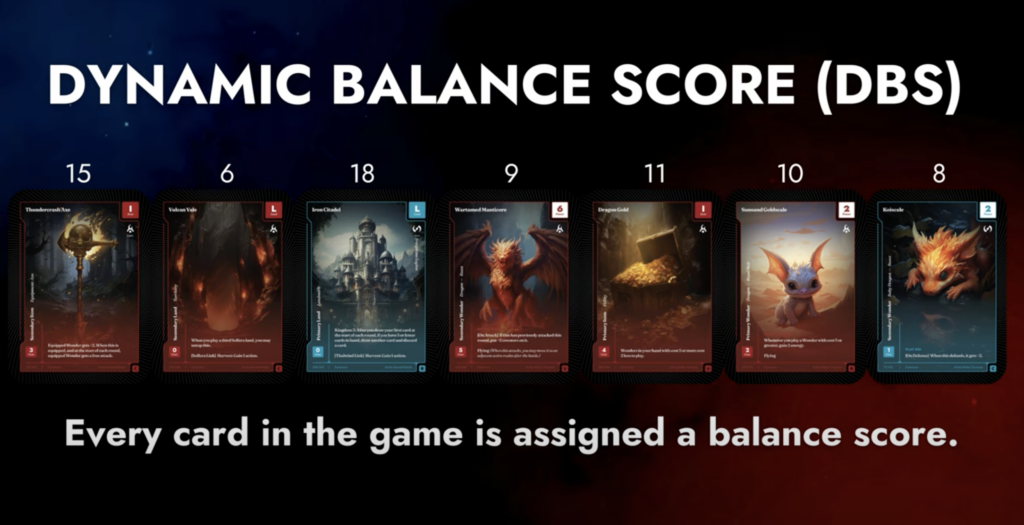
Every card in the game is assigned a balanced score. The score is not on the card it lives in the card database. When you build your deck you add up the points of all the cards in your deck to find its DBS. We plan to have management tools for this like a website where you can paste in a deck list and have it show you the points for every card in your deck and add them up.
So what is DBS used for? First the score tiers define the formats. You can play in the 500 points and under category or a pauper style format (that would be 200 points and under.) For casual games you can use DBS for tabletop matchmaking. In other games players are already trying to do tabletop matchmaking when they say things like “My deck is a 6 out of 10 or 7 out of 10” and some people try to say a deck is a little weaker than it really is. And if somebody does underrate their deck it’s hard to call it out because if you don’t think it’s a 6 out of 10 they can argue. If you have a true 6 out of 10 but then you get lucky and pull off a big win everyone might still suspect you of being that player who’s lowballing.
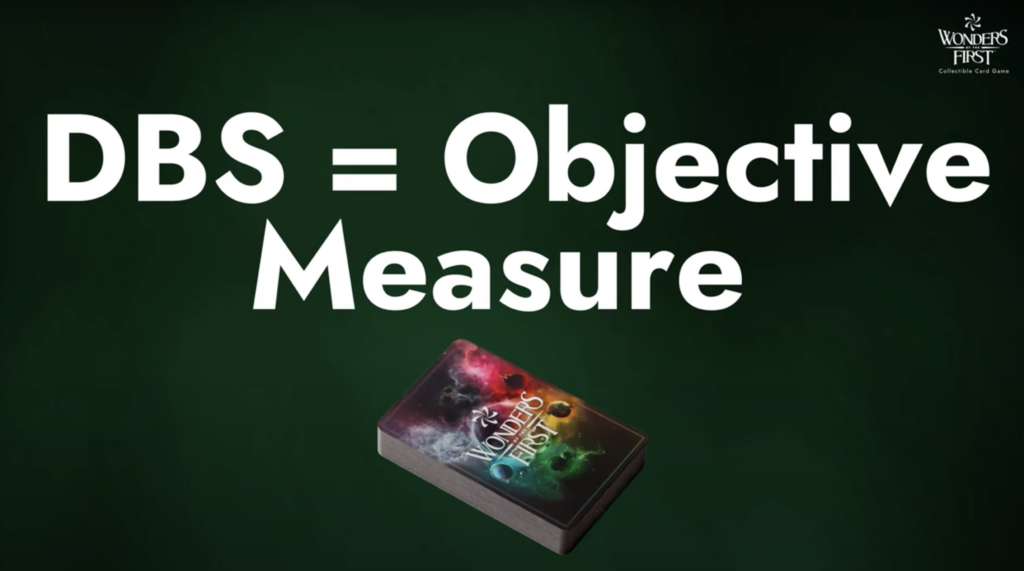
So DBS gives an objective measure of decks and no suspicion or arguing it gives a better chance of fair matchups in the long run and that’s the problem we’re really trying to solve here all of us just want fair matchups. We want a new player to have a good game against a veteran player. Notice that in other games overpowered cards have been viewed as a Power Balance problem but DBS lets us address it as a matchmaking problem . OP cards don’t get banned. We just have them matched against other OP cards. So those are the basics of DBS .
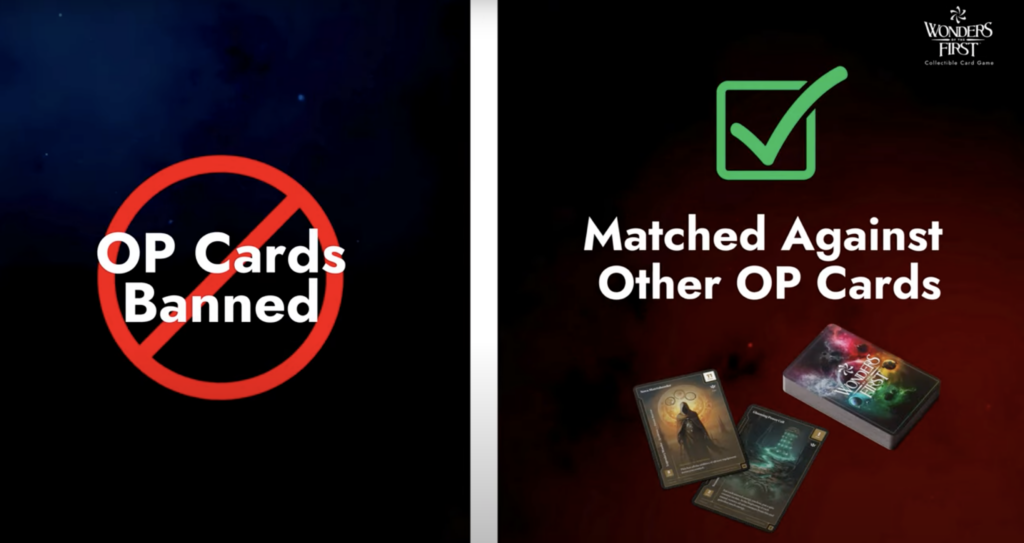
But what happens when we update the scores? Because every season at predictable intervals we gradually tune the scores based on their impact on the meta if cards are dominating they will have their time at the top but after a while their points will go up until there’s a new balance.
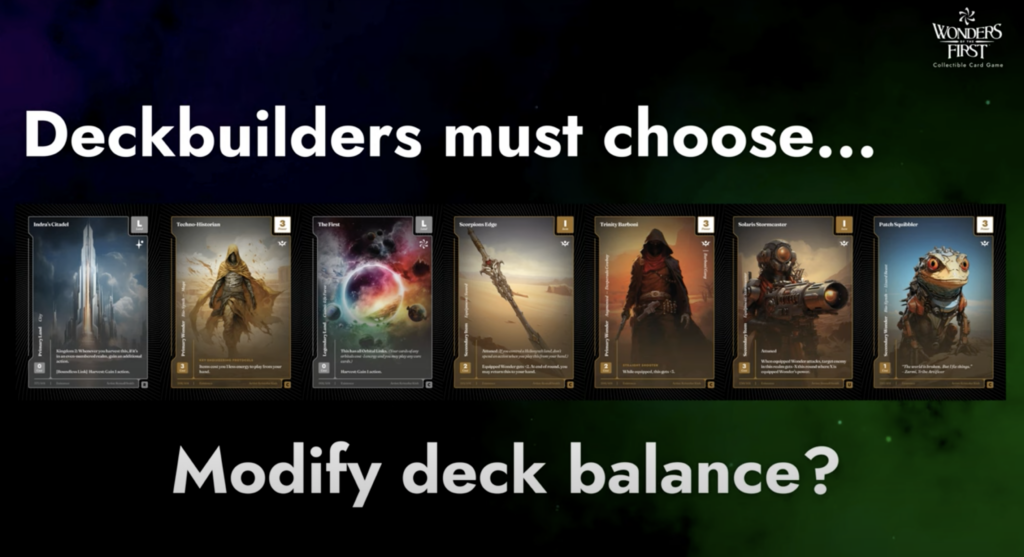
So deck builders will have to choose whether to keep those cards and make the rest of the deck weaker or preserve their deck and just play at a higher weight category. When this happens it opens up space for other low score cards to come in and have their time at the top. For a lot of deck builders this is one of the best things about CCGs. The meta is alway evolving.
Now I’ll talk about how DBS convinced us it was possible to have a sustainable game with no reprints. Traditionally if a CCG card was powerful it became a staple that every player needs but now we can tune a card gradually so it doesn’t go in every deck because there’s a cost benefit to putting it in. Each play group can choose the tier they like best depending on the cards that they want to use and if your little brother just started playing the group will know how bad his deck is and bring out their low tier decks to match it.
So imagine it’s 10 years in the future — the Existence set from way back in 2024 has Power Cards. They’re scarce but they don’t show up too much in the 500 Point deck tier and when they do the rest of those decks are balanced so they aren’t needed to be competitive unless you want to play in the infinite points format. In this future world there are new cards that are similar to the basic cards of existence so the game still retains the identity of the orbitals and strategies. However all new cards are mechanically different in some way we don’t do functional reprints — which refers to an old card with a different name and art — but we will do near functional reprints for basic fundamental cards when needed.
Another factor is always going to be collection size even if we both have low decks but I build from a pool of 500 cards and you build from a pool of 5,000. You’ll still have an advantage and we don’t have a perfect solution to this but we do have steady incremental changes for the worst offender cards always giving space for the new cards to fight back. So that’s why we use the word sustainable. The Meta will not always be finely balanced but it will be in the ballpark and ever changing not necessarily smooth but sustainable. We’ll always be working to improve it and when I say we I mean we the dev team and the community. When certain cards are loved or hated that should be reflected in the updates. Salt scores should have an impact.
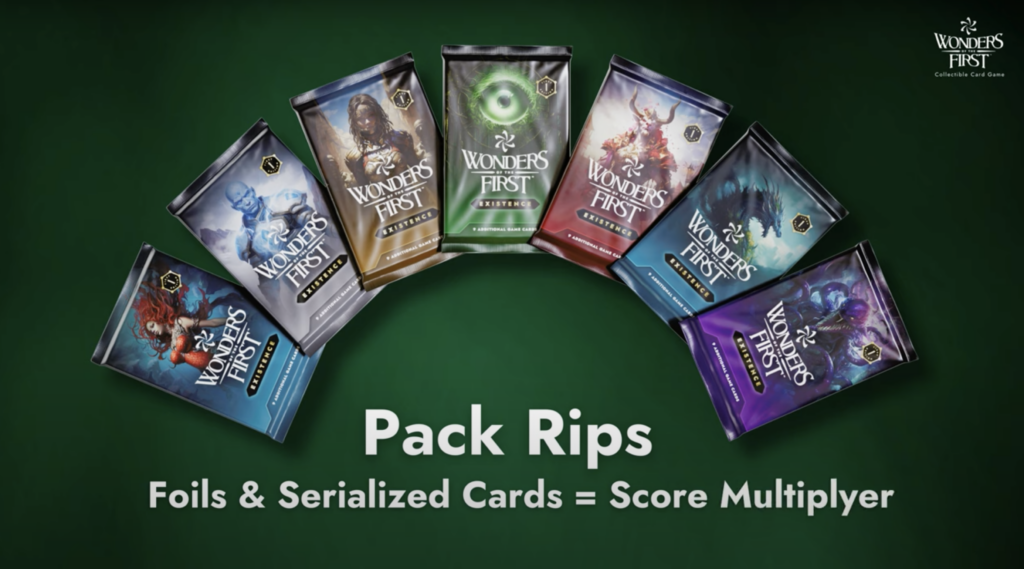
Okay a few more things you can do with DBS. DBS can tell you who had the guts to bring the lowest score deck to the table. If you win with the lowest point deck that’s extra prestige. You can also use it like a golf handicap cap and play a low-score deck against a beginner with a high score deck. If you like cube type formats DBS lets you measure the power level of a cube so you’ll know what’s the highest score cube you ever played. You can also use DBS to score pack rips. Open a pack in front of your friends, add up your score, and if you get foils or serialized cards you get a score multiplier. So you can compare high scores for pack opening.
The Wonders community is really passionate about the DBS approach and I want to give credit to Porglit, Johnalich, the LEGEND, Loco4 and our other members for helping us with the name dynamic balance score. DBS… it’s cool. It’s brandable. It can stick in people’s minds. Good job, guys! The ideas from players are incredibly valuable and I’m proud we’re developing the game as a community.
That wraps it up for now. I hope to see you next time for more Wonders of The First game design.


